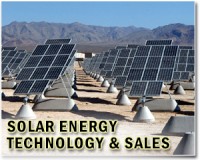 |
Sylmar, CA (SPX) Nov 02, 2010 Boeing reports that its wholly-owned subsidiary Spectrolab has produced its 3 millionth multi-junction, space-based solar cell. Production records indicate that the gallium arsenide cell was delivered during the week of Oct. 25. Spectrolab has been manufacturing multi-junction solar cells for more than 15 years and other space products for more than 50. "Congratulations to Spectrolab for this remarkable achievement," said Craig Cooning, vice president and general manager, Boeing Space and Intelligence Systems. "Our customers expect flawless satellites that can endure many years in space to enable national-security and Earth-observation missions, as well as consumer and business communications. Spectrolab's solar cells have powered more than 500 satellites and interplanetary missions." Since its founding in 1956, Spectrolab has led the way in the development of high-efficiency solar cells for space missions. During the Apollo 11 mission in 1969, a Spectrolab product became the first solar panel to be placed on the moon. Today, Spectrolab solar panels are the only panels in operation on Mars, as part of a reconnaissance satellite and two land-exploration rovers. Spectrolab recently delivered solar panels to the NASA-Jet Propulsion Laboratory JUNO mission, the first mission to Jupiter to be powered by photovoltaic cells. Spectrolab's cells and panels power approximately 60 percent of all satellites in Earth's orbit, as well as the International Space Station. "Many years of continuous improvement in product design and high-volume manufacturing experience have allowed Spectrolab to develop mature, cost-effective and repeatable processes, resulting in the delivery of high-quality, reliable and affordable products to both space and terrestrial customers," said David Lillington, president of Spectrolab. "Our business continues to grow as we gain market share. We are increasing productivity and introducing higher levels of automation to meet this increased demand. We expect to announce the production start of our next-generation space cells early next year." In 2001, Spectrolab embarked on a strategy to adapt its space solar cell technology for terrestrial renewable-energy applications. The terrestrial solar cells convert concentrated sunlight to electricity with an average efficiency of more than 38.5 percent and benefit from the same equipment, materials and processes used for space manufacturing. In 2009, Spectrolab set a new world record in terrestrial concentrator solar efficiency with a triple-junction, lattice-matched cell that converts 41.6 percent of sunlight into electricity. This year, Spectrolab will deliver approximately 50 megawatts of solar cells to its terrestrial concentrated photovoltaic customers and forecasts producing almost 150 megawatts in 2011. Spectrolab is the world's leading solar cell manufacturer for space and terrestrial applications.
Share This Article With Planet Earth
Related Links - All About Solar Energy at SolarDaily.com
 South Africa woos investors for world's biggest solar plant
South Africa woos investors for world's biggest solar plantUpington, South Africa (AFP) Oct 28, 2010 South Africa wooed investors Thursday for what could become the world's largest solar project, built on the edge of the Kalahari Desert to provide an eighth of the country's electricity. More than 400 investors and solar industry insiders from as far away as India, South Korea, Spain and the United States descended on the tiny town of Upington in South Africa's arid Northern Cape province fo ... read more |
|
| The content herein, unless otherwise known to be public domain, are Copyright 1995-2010 - SpaceDaily. AFP and UPI Wire Stories are copyright Agence France-Presse and United Press International. ESA Portal Reports are copyright European Space Agency. All NASA sourced material is public domain. Additional copyrights may apply in whole or part to other bona fide parties. Advertising does not imply endorsement,agreement or approval of any opinions, statements or information provided by SpaceDaily on any Web page published or hosted by SpaceDaily. Privacy Statement |